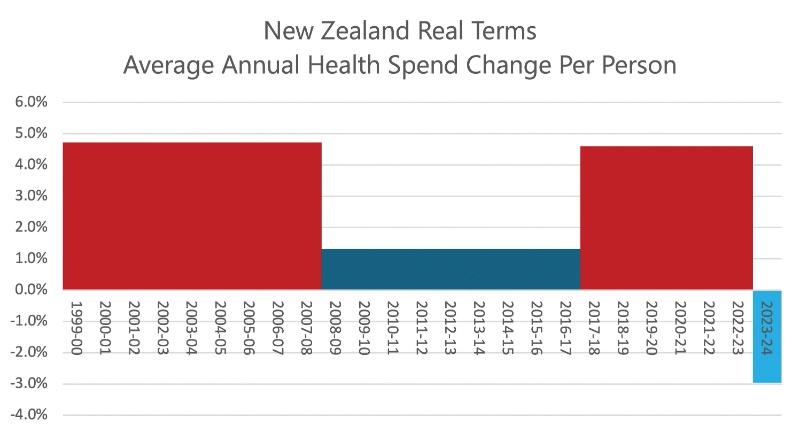New Report Shows Sustained Ambition And Focus Is Required To End Child Poverty
28 August, 2024
A report released today tells the story of what child poverty means for children and their families in Aotearoa New Zealand. It further shows the importance of data and tracking trends over time using a range of measures, to ensure child poverty reduction is sustained.
“This report clearly shows the impact that government decision-making has had on child poverty rates over time, improving the lives of families and children’s day-to-day experiences. We need Government to continue making decisions that ensure all children are included fully in our society without the burdens that come with being poor,” says Chief Children’s Commissioner Dr Claire Achmad.
Child Poverty in New Zealand, the latest in a series of reports from the Ministry of Social Development, is a detailed look at a range of child poverty measures over time and analysis of policies and real-world factors shaping these trends. It provides examples of the lived experience of financial and material hardship, and international comparisons that show we rank poorly compared with other relatively wealthy countries.
Using already-published Stats NZ data, the report shows increases across three of the nine official measures of child poverty under the Child Poverty Reduction Act 2018. Of particular concern is the jump in the percentage of children experiencing material hardship, up from 10.5% in 2021/22, to 12.5% in 2022/23. This means that there are still 144,000 children living in homes that cannot afford at least six of the 17 items regarded as essential – things like having fresh fruit and vegetables, a separate bed, waterproof coat, warm clothes and shoes and doctors’ visits.
The report shows that Māori, Pacific and disabled children are disproportionately affected by child poverty.
While a strong economy with
good-quality jobs plays a role, the report outlines trends
that show that significant and lasting government
commitments are necessary to lift children and their whānau
out of poverty.
The longitudinal data in the report
illustrates the powerful effect that Working for Families
and other tax transfers, minimum wage and benefit increases
have made to reduce poverty.
Dr Achmad is continuing her call for a cross-party commitment and ambition to ending child poverty.
“The UN Convention on the Rights of the Child is very clear: all children have the right to an adequate standard of living. We all want our country to be a great place to grow up. But right now, as this report shows, poverty is shutting large numbers of children out of the most basic childhood experiences. It’s really hard to thrive when you’re poor, and no child should want for the very basics in life in New Zealand,” she says.
The report shows that more than half of children in material hardship live in working households.
“Addressing high rates of child poverty in our small, relatively rich nation requires a wider focus beyond parents being in employment. A key Government policy is to get people into jobs, but we also need policies to lift incomes and provide practical support and investments focused on children’s wellbeing.
“Robust data and research about children’s outcomes is an essential building block to inform decisions and shape policies that improve their wellbeing. The data collected through a range of dimensions measured under the Child Poverty Reduction Act supports us to do that well.
“I will continue advocating for the Government to keep commissioning holistic, robust data about children and young people, to drive evidence-led policies and investments that can make a real difference in their lives.”
Evidence shows that the experience of poverty, especially when it is severe and persistent, can affect children’s daily experiences, educational outcomes, mental and physical health, ability to participate, and future opportunities.
“We can change the story here, and this report shows we’ve done it before. This requires putting children at the heart of decision-making relating to poverty reduction,” says Dr Achmad.
“It also requires working together on a cross-party basis to sustain ambition and focus towards ultimately ending child poverty in New Zealand. That’s why I’m calling on the Government – and future successive governments – to make ending child poverty an enduring project of national significance.
“Let’s actively push towards the goal of halving child poverty by 2028. This report shows we have made progress on poverty before. We can and must do it again, with sustained ambition and focus.”


 Gordon Campbell: On The Americanising Of NZ’s Public Health System
Gordon Campbell: On The Americanising Of NZ’s Public Health System Rio Tinto & NZAS: Archaeological Project Underway From Historic Excavations At Tiwai Point
Rio Tinto & NZAS: Archaeological Project Underway From Historic Excavations At Tiwai Point New Zealand Deerstalkers Association: NZDA Urges Hunters To Prioritise Safety This Roar Season
New Zealand Deerstalkers Association: NZDA Urges Hunters To Prioritise Safety This Roar Season PSA: 1000 Days Since Landmark Pay Equity Deal Expired - Workers Losing $145 A Week
PSA: 1000 Days Since Landmark Pay Equity Deal Expired - Workers Losing $145 A Week Grace Tinetali-Fiavaai, RNZ: Widow Of Fa'anānā Efeso Collins Seeks Inquiry Into His Death - 'Unanswered Questions'
Grace Tinetali-Fiavaai, RNZ: Widow Of Fa'anānā Efeso Collins Seeks Inquiry Into His Death - 'Unanswered Questions' Te Pāti Māori: Te Pāti Māori Call For Mandatory Police Body Cameras
Te Pāti Māori: Te Pāti Māori Call For Mandatory Police Body Cameras NZ First Party: NZ First Introduces the “Conscience Acts Referendums Bill”
NZ First Party: NZ First Introduces the “Conscience Acts Referendums Bill”


